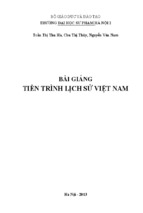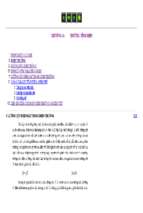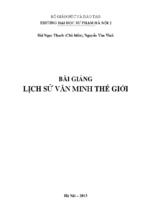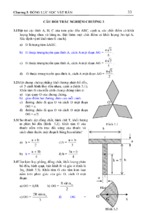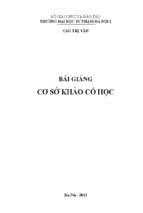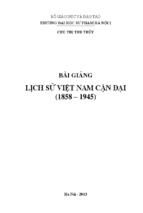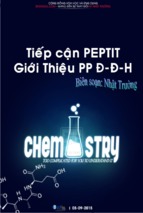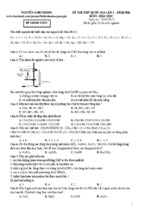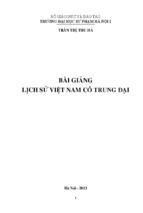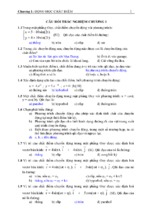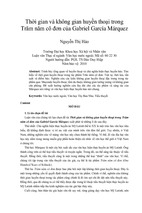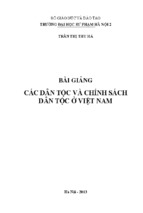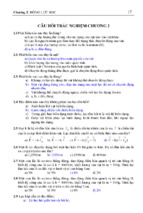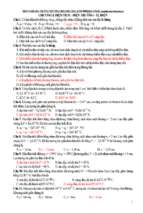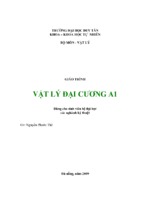--> Content
DEVICES
Physics
and
Technology
2nd Edition
S.M. Sze
Semiconductor
Devices
P h y s i c s and T e c h n o l o g y
S. M, SZE
C7A4'C Chair Professor
National Chiao Tung CTniversity
National Xano Device Laboratories
Hsinchu, Taiuan
JOHN WlLEY & SONS, INC.
Acquisitions Editor TVilliam Zobrist
Marketing Manager Katherine Hepburn
Production Services Manager Jeanine Furino
Production Editor Sandra Russell
Designer Harold Nolan
Production Management Services Argosy Publishing Services
Cover Photography: A transmission-electron micrograph of a floating-gate nonvolatile semiconductor memory with a magnification of 100,000 times. (Photography courtesy of George T. T.
Sheng.) For a discussion of the device, see Chapters 1, 6, and 14.
This book was typeset in New Caledonia by Argosy Publishing and printed and bound by
R. R. Donnelley and Sons, Inc, (Willard).The cover was printed by The Lehigh Press.
The paper in this book was manufactured by a mill whose forest management programs include
sustained yield harvesting of its timberlands. Sustained yield harvesting principles ensure that
the number of trees cut each year does not exceed the amount of new growth.
The book is printed on acid-free paper.
@
Copyright O 1985,2002 by John Wiley & Sons, Inc. All rights rights reserved.
No part of this publication may be reproduced, stored in a retrieval system or transmitted in any form or by
any means, electronic, mechanical, photocopying, recording, scanning, or othemise, except as permitted
under Sections 107 or 108 of the 1976 United States Copyright Act, without either the prior written permission of the Publisher or authorization through payment of the appropriate per-copy fee to the Copyright
Clearance Center, 222 Rosewood Drive, Danvers, MA 01923, (508) 750-8400, fax (508) 750-4470. Requests
to the Publisher for permission should be addressed to the Permissions Department, John Wiley & Sons,
Inc. 605 Third Avenue, New York, NY 10158-0012, (212) 850-6008, E-mail:
[email protected]
order books or for custome service call 1-800-CALL-WILEY (225-3945).
Library of Congress Cataloging in Publication Data:
Sze, S. h l . , 1936Semiconductor devices, physics and technology/S.M. Sze.--2nd ed.
p. cm.
Includes bibliographical references and index.
ISBK 0-471-33372-7 (cloth: alk. paper)
1. Semiconductors. I. Title.
TK7871.85 .S9883 2001
ISBN 0-471-33372-7
Printed in the United States of America
In Memory of My Mentors
Dr: L. J. Chu
Academia Sinica
Dr: R. M. Ryder
Bell Laboratories
The book is an introduction to the physical principles of modern semiconductor devices
and their advanced fabrication technology. It is intended as a textbook for undergraduate students in applied physics, electrical and electronics engineering, and materials science. It can also serve as a reference for practicing engineers and scientists who need an
update on device and technology developments.
WHAT'S NEW IN THE SECOND EDITION
50% of the material has been revised or updated. We have added many sections that are of contemporary interest such as flash memory, Pentium chips,
copper metallization, and eximer-laser lithography. On the other hand, we
have omitted or reduced sections of less important topics to maintain the overall book length.
We have also made substantial changes in updating the pedagogy. We have
adopted a two-color format for all illustrations to enhance their presentation;
and all important equations are boxed.
All device and material parameters have been updated or corrected . For
example, the intrinsic carrier concentration in silicon at 300K is 9.65 x
lo9 ~ m - replacing
~,
the old value of 1.45 x 1010 cm3. This single change has
an impact on at least 30% of the problem solutions.
To improve the development of each subject, sections that contain graduatelevel mathematics or physical concepts have been omitted or moved to the
Appendixes, at the back of the book.
TOPICAL COVERAGE
Chapter 1 gives a brief historical review of major semiconductor devices and
key technology developments. The text is then organized into three parts.
Part I, Chapters 2-3, describes the basic properties of semiconductors and
their conduction processes, with special emphasis on the two most important
semiconductors: silicon (Si) and gallium arsenide (GaAs).The concepts in Part
I will be used throughout this book. These concepts requires a background
knowledge of modern physics and college calculus.
Part 11, Chapters 4-9, discusses the physics and characteristics of all major
semiconductor devices. We begin with the p-n junction which is the key
building block of most semiconductor devices. We proceed to bipolar and
field-effect devices and then cover microwave, quantum-effect, hot-electron,
and photonic devices.
Part 111, Chapters 10-14, deals with processing technology from crystal growth
to impurity doping. We present the theoretical and practical aspects of the
major steps in device fabrication with an emphasis on integrated devices.
Preface
v
KEY FEATURES
Each chapter includes the following features:
The chapter starts with an overview of the topical contents. A list of learning
goals is also provided.
The second edition has tripled the worked-out examples that apply basic concepts to specific problems.
A chapter summary appears at the end of each chapter to summarize the
important concepts and to help the student review the content before tackling
the homework problems that follow.
The book includes about 250 homework problems, over 50% of them new to
the second edition. Answers to odd-numbered problems, which have numerical solutions are provided in Appendix L at the back of the book.
COURSE DESIGN OPTIONS
The second edition can provide greater flexibility in course design. The book contains
enough material for a full-year sequence in device physics and processing technology.
Assuming three lectures per week, a two-semester sequence can cover Chapters 1-7 in
the first semester, leaving Chapters 8-14 for the second semester. For a three-quarter
sequence, the logical break points are Chapters 1-5. Chapters 6-9, and Chapters 10-14.
A two-quarter sequence can cover Chapters 1-5 in the first quarter. The instructor
has several options for the second quarter. For example, covering Chapters 6, 11, 12,
13, and 14 produces a strong emphasis on the MOSFET and its related process technologies, while covering Chapters 6-9 emphasizes all major devices. For a one-quarter
course on semiconductor device processing, the instructor can cover Section 1.2 and
Chapters 10-14.
A one-semester course on basic semiconductor physics and devices can cover
Chapters 1-7. A one-semester course on microwave and photonic devices can cover
Chapters 1-4,7-9. If the students already have some familiarity with semiconductor fundamentals, a one-semester course on Submicron MOSFET: Physics and Technology can
cover Chapters 1,6,10-14. Of course, there are many other course design options depending on the teaching schedule and the instructor's choice of topics.
TEXTBOOK SUPPLEMENTS
Instructor's Manual. A complete set of detailed solutions to all the end-ofchapter problems has been prepared. These solutions are available free to all
adopting faculty,
The figures used in the text are available, in electronic format, to instructors
from the publisher. Instructors can find out more information at the publisher's website at: http: //www.wiley.comlcollege/sze
Many people have assisted me in revising this book. I would first like to express my deep
appreciation to my colleagues at the National Nano Device Laboratories for their contributions in improving the content of the text, in suggesting state-of-the-art illustrations,
and in providing homework problems and solutions: Dr. S. F. Hu on Chapter 2, Dr. W.
I?. Wu on Chapter 3, Dr. S. H. Chan on Chapter 4, Dr. T. B. Chiou on Chapter 5,
Dr. H. C. Lin on Chapter 6, Dr. J. S. Tsang on Chapter 7, Dr. G. W. Huang on
Chapter 8, Dr. J. D. Guo on Chapter 9, Dr. S. C. Wu on Chapter 10, Dr. T. C. Chang
on Chapter 11, Drs. M. C. Liaw and M. C. Chiang on Chapter 12, Dr. F. H. KO on
Chapter 13, and Dr. T. S. Chao on Chapter 14.
I have benefited significantly from suggestions made by the reviewers: Profs. C. Y.
Chang, C. H. Chen, T. Y. Huang, B. Y. Tsui, and T. J. Yang of the National Chiao Tung
University, Profs. Y. C. Chen and M. K. Lee of the National Sun Yet-sen University, Prof.
C. S. Lai of the Chang Gung University, Prof. W. Y. Liang of the University of Cambridge,
Dr. K. K. Ng of Bell Laboratories, Lucent Technologies, Prof. W. J. Tseng of the National
Cheng Kung University, Prof. T. C. Wei of the Chung Yuan University, Prof. Y. S. G. Wu
of the National Tsing Hwa University, Dr. C. C. Yang of the National Nano Device
Laboratories, Prof. W. L. Yang of Feng Chia University, and Dr. A. Yen of the Taiwan
Semiconductor Manufacturing Company.
I am further indebted to Mr. N. Erdos for technical editing of the manuscript, Ms.
Iris Lin for typing the many revisions of the draft and the final manuscript, and Ms. Y.
G. Yang of the Semiconductor Laboratory, the National Chiao Tung University who furnished the hundreds of technical illustrations used in the book. In each case where an
illustration was used from another published source, I have received permission from
the copyright holder. Even through all illustrations were then adopted and redrawn,
I appreciate being granted these permissions. I wish to thank Mr. George T. T. Sheng of
the Macronix International Company for providing the flash-memory transmission electron micrography, which is shown in the cover design. I wish also to thank Mr. A. Mutlu,
Mr. S. Short, and Ms. R. Steward of Intel Corporation for providing the photographs of
the first microprocessor (Intel 4004) and its latest version (Pentium 4).
At John Wiley and Sons, I wish to thank Mr. G. Telecki and Mr. W. Zobrist who encouraged me to undertake the project. I wish also to acknowledge the Spring Foundation of
the National Chiao Tung University for the financial support. I would especially like to
thank the United Microelectronics Corporation (UMC),Taiwan, ROC, for the UMC Chair
Professorship grant that provided the environment to work on this book.
Finally, I am grateful to my wife Therese for her continued support and assistance
in this and many previous book projects. I also like to thank my son Raymond (Doctor
of Medicine) and my daughter-in-law Karen (Doctor of Medicine), and my daughter Julia
(Certified Financial Analyst) and my son-in-law Bob (President, Cameron Global
Investment, LLC), who have helped me in their capacities as my medical advisors and
financial advisors, respectively.
S. M. Sze
Hsinchu, Taiwan
March 2001
Preface iv
b CHAPTER 1
Introduction 1
1.1 Semiconductor Devices 1
1.2 Semiconductor Technology 7
Summary 13
PART I
SEMICONDUCTOR PHYSICS
B
CHAPTER 2
Energy Bands and Carrier Concentration in
Thermal Equilibrium 17
2.1
2.2
2.3
2.4
2.5
2.6
2.7
Semiconductor Materials 17
Basic Crystal Structure 19
Basic Crystal Growth Technique 24
Valence Bonds 27
Energy Bands 28
Intrinsic Carrier Concentration 34
Donors and Acceptors 37
Summary 44
CHAPTER 3
Carrier Transport Phenomena 47
3.1 Carrier Drift 48
3.2 Carrier Diffusion 57
3.3 Generation and Recombination
Processes 60
3.4 Continuity Equation 66
3.5 Thermionic Emission Process 72
3.6 Tunneling Process 73
3.7 High-Field Effects 75
Summary 80
r CHAPTER 4
Junction 84
Basic Fabrication Steps 85
Thermal Equilibrium Condition 88
Depletion Region 93
Depletion Capacitance 100
Current-Voltage Characteristics 104
4.6 Charge Storage and Transient Behavior 114
4.7 JunctionBreakdown 117
4.8 Heterojunction 124
Summary 127
m CHAPTER 5
Bipolar Transistor and Related Devices 130
5.1 The Transistor Action 131
5.2 Static Characteristics of Bipolar
Transistor 137
5.3 Frequency Response and Switching of
Bipolar Transistor 146
5.4 The Heterojunction Bipolar Transistor
5.5 The Thyristor and Related Power
Devices 156
Summary 165
r8.
CHAPTER 6
MOSFET and Related Devices 169
6.1
6.2
6.3
6.4
6.5
6.6
6.7
hv
The MOS Diode 170
MOSFET Fundamentals 186
MOSFET Scaling 199
CMOS and BiCMOS 205
MOSFET on Insulator 209
MOS Memory Structures 214
The Power MOSFET 218
Summary 220
CHAPTER 7
MESFET and Related Devices 224
7.1 Metal-Semiconductor Contacts
7.2 MESFET 237
7.3 MODFET 246
Summary 251
8.1
8.2
8.3
8.4
8.5
8.6
225
Basic Microwave Technology 255
Tunnel Diode 259
IMPATT Diode 261
Transferred-Electron Devices 264
Quantum-Effect Devices 270
Hot-Electron Devices 275
Summary 278
151
viii
Contents
b CHAPTER 9
lr CHAPTER 14
Photonic Devices 282
Integrated Devices 489
9.1 Radiative Transitions and Optical
Absorption 282
9.2 Light-Emitting Diodes 288
9.3 Semiconductor Laser 298
9.4 Photodetector 311
9.5 Solar Cell 318
Summary 328
14.1
14.2
14.3
14.4
14.5
PART Ill
List of Symbols 531
APPENDIX A
SEMICONDUCTOR TECHNOLOGY
b
Passive Components 491
Bipolar Technology 496
MOSFET Technology 503
MESFET Technology 519
Challenges for Microelectronics 522
Summary 527
*
APPENDIX B
International Systems of Units (SI Units) 533
CHAPTER 10
Crystal Growth and Epitaxy 332
10.1 Silicon Crystal Growth from
the Melt 333
10.2 Silicon Float-Zone Process 339
10.3 GaAs Crystal-Growth Techniques 343
10.4 Material Characterization 347
10.5 Epitaxial-Growth Techniques 354
10.6 Structures and Defects in
Epitaxial Layers 361
Summary 365
c
Unit Prefixes 534
a APPENDIX
b
APPENDIX D
Greek Alphabet 535
@
APPENDIX E
Physical Constants 536
B APPENDIX F
P CHAPTER 11
Properties of Important Element and Binary
Compound Semiconductors at 300 K 537
Film Formation 369
11.1
11.2
11.3
11.4
Thermal Oxidation 370
Dielectric Deposition 378
Polysilicon Deposition 388
Metallization 390
Summary 400
b~
rr APPENDIX H
Derivation of the Density of States in a
Semiconductor 539
rh CHAPTER 12
Lithography and Etching 404
12.1 Optical Lithography 404
12.2 Next-Generation Lithographic
Methods 418
12.3 Wet Chemical Etching 426
12.4 Dry Etching 431
12.5 Microelectromechanical Systems
Summary 447
APPENDIX G
Properties of Si and GaAs at 300 K 538
b APPENDIX I
Derivation of Recombination Rate for Indirect
Recombination 541
)*
443
F CHAPTER 13
Impurity Doping 452
13.1 Basic Diffusion Process 453
13.2 Extrinsic Diffusion 462
13.3 Diffusion-Related Processes 466
13.4 Range of Implanted Ions 469
13.5 Implant Damage and Annealing 477
13.6 Implantation-Related Processes 481
Summary 485
APPENDIX J
Calculation of the Transmission Coefficient for
a Symmetric Resonant-Tunneling Diode 543
h APPENDIX K
Basic Kinetic Theory of Gases 545
bs APPENDIX L
Answers to Selected Problems 547
Index 551
Introduction
1.1 SEMICONDUCTOR DEVICES
1.2 SEMICONDUCTOR TECHNOLOGY
SUMMARY
As an undergraduate in applied physics, electrical engineering, electronics engineering,
or materials science, you might ask why you need to study semiconductor devices. The
reason is that semiconductor devices are the foundation of the electronic industry, which
is the largest industry in the world with global sales over one trillion dollars since 1998.
A basic knowledge of semiconductor devices is essential to the understanding of advanced
courses in electronics. This knowledge will also enable you to contribute to the Information
Age, which is based on electronic technology.
Specifically, we cover the following topics:
Four building blocks of semiconductor devices.
Eighteen important semiconductor devices and their roles in electronic
applications.
Twenty important semiconductor technologies and their roles in device
processing.
Technology trends toward high-density, high-speed, low-power consumption,
and nonvolatility.
1.1 SEMICONDUCTOR DEVICES
Figure 1 shows the sales volume of the semiconductor-device-based electronic industry
in the past 20 years and projects sales to the year 2010. Also shown are the gross world
product (GWP) and the sales volumes of automobile, steel, and semiconductor industries.ls2We note that the electronic industry has surpassed the automobile industry in 1998.
If the current trends continue, in year 2010 the sales volume of the electronic industry
will reach three trillion dollars and will constitute about 10% of GWP. The semiconductor
industry, which is a subset of the electronic industry, will grow at an even higher rate to
surpass the steel industry in the early twenty-first century and to constitute 25% of the
electronic industry in 2010.
2
Chapter I , Introduction
i
105
I
I
I
I
1980
1990
2000
2010
Year
Fig. 1 Gross world product (GWP) and sales volumes of the electronics, automobile, semiconductor, and steel industries from 1980 to 2000 and projected to 2010.1-"
1.1.1 Device Building Blocks
Semiconductor devices have been studied for over 125 years.3 To date, we have about
60 major devices, with over 100 device variations related to themS4However, all these
devices can be constructed from a small number of device building blocks.
Figure 2a is the metal-semiconductor interface, which is an intimate contact between
a metal and a semiconductor. This building block was the first semiconductor device ever
studied (in the year 1874). This interface can be used as a rectifying contact, that is, the
device allows electrical current to flow easily only in one direction, or as an ohmic contact, which can pass current in either direction with a negligibly small voltage drop. We
can use this interface to form many useful devices. For example, by using a rectifying
contact as the gate" and two ohmic contacts as the source and drain, we can form a MESFET (metal-semiconductor field-effect transistor), an important microwave device.
n-type
Semtconductor
P-w
Semiconductor
(b)
d E t
J
Semiconductor
A
Sem~conductor
B
_o
!y?b
Oxide
Sem~conductor
Fig. 2 Basic device building blocks. (a) Metal-semiconductorinterface; (b) p-n junction; (c)
heterojunction interface; and (d) metal-oxide-semiconductorstructure.
" The italicized terms in this paragraph and in subsequent paragraphs are defined and explained in Part I1
of the book.
Chapter I . Introduction
-
3
The second building block is the p-n junction (Fig. 2b),which is formed between a
p- type (with positively charged carriers) and an n-type (with negatively charged carriers) semiconductors. The p-n junction is a key building block for most semiconductor
devices, and p-n junction theory serves as the foundation of the physics of semiconductor devices. By combining two p-n junctions, that is, by adding another p-type semiconductor, we form the p-n-p bipolar transistor, which was invented in 1947 and had
an unprecedented impact on the electronic industry. If we combine three p-n junctions
to form a p-n-p-n structure, it is a switching device called a thyristor.
The third building block (Fig. 2c) is the heterojunction interface, that is, an interface formed between two dissimilar semiconductors. For example, we can use gallium
arsenide (GaAs) and aluminum arsenide (AIAs) to form a heterojunction. Heterojunctions
are the key components for high-speed and photonic devices.
Figure 2d shows the metal-oxide-semiconductor (MOS) structure. The structure can
be considered a combination of a metal-oxide interface and an oxide-semiconductor interface. By using the MOS structure as the gate and two p-n junctions as the source and
drain, we can form a MOSFET (MOS field-effect transistor). The MOSFET is the most
important device for advanced integrated circuits, which contains tens of thousands of
devices per integrated circuit chip.
1.1.2 Major Semiconductor Devices
Some major semiconductor devices are listed in Table 1 in chronological order; those
with a superscript b are two-terminal devices, othenvise they are three-terminal or
four-terminal devicese3The earliest systematic study of semiconductor devices (metalsemiconductor contacts) is generally attributed to B r a ~ nwho
, ~ in 1874 discovered that
the resistance of contacts between metals and metal sulfides (e.g.,copper pyrite) depended
on the magnitude and polarity of the applied voltage. The electroluminescence phenomenon (for the light-emitting diode)was discovered by Round6 in 1907. He observed
the generation of yellowish light from a crystal of carborundom when he applied a potential of 10 V between two points on the crystals.
TABLE I
Major Semiconductor Devices
Year
Semiconductor Devicea
Author(s)/Inventor(s)
Ref.
1874
1907
1947
1949
1952
1954
1957
1958
1960
1962
1963
1963
1965
Metal-semiconductorcontactb
Light emitting diodeb
Bipolar transistor
p-n junctionb
Thyristor
Solar cellb
Heterojunction bipolar transistor
Tunnel diodeb
MOSFET
Laserb
Heterostructure laserb
Transferred-electron diodeb
IMPATT diodeb
Braun
Round
Bardeen, Brattain, and Shockley
Shockley
Ebers
Chapin, Fuller, and Pearson
Kroemer
Esaki
Kahng and Atalla
Hall et a1
Kroemer, Alferov and Kazarinov
Gunn
Johnston, DeLoach, and Cohen
5
6
7
8
9
10
11
12
13
15
16,17
18
19
(continued)
.
4 h Chapter 1, Introduction
TABLE I (continued)
-
Year
Semiconductor Devicea
Author(s)/Inventor(s)
1966
1967
1970
1974
1980
1994
MESFET
Nonvolatile semiconductor memory
Charge-coupled device
Resonant tunneling diodeb
MODFET
Room-temperature single-electron
memory cell
20 nm MOSFET
Mead
Kahng and Sze
Boyle and Smith
Chang, Esaki, and Tsu
Mimura et al.
Yano et al.
2001
-
-
Ref.
Chau
-
aMOSFET, metal-oxide-semiconductor field-effect transistor; MESFET, metal-semiconductor field-effect transistor;
MODFET, modulation-doped field-effect transistor.
bDenotes a two-terminal device, otherwise it is a three- or four-terminal device.
In 1947, the point-contact transistor was invented by Bardeen and Brattain.' This
was followed by Shockley'ss classic paper on p-n junction and bipolar transistor in 1949.
Figure 3 shows the first transistor. The two point contacts at the bottom of the triangular quartz crystal were made from two stripes of gold foil separated by about 50 pm
(lpm =
cm) and pressed onto a semiconductor surface. The semiconductor used
was germanium. With one gold contact forward biased, that is, positive voltage with respect
to the third terminal, and the other reverse biased, the transistor action was observed,
that is, the input signal was amplified. The bipolar transistor is a key semiconductor device
and has ushered in the modern electronic era.
In 195.2, EbersQdeveloped the basic model for the thyristor, which is an extremely
versatile switching device. The solar cell was developed by Chapin, et al.1° in 1954 using
a silicon p-n junction. The solar cell is a major candidate for obtaining energy from the
sun because it can convert sunlight directly to electricity and is environmentally benign.
In 1957, Kroemerll proposed the heterojunction bipolar transistor to improve the transistor performance; this device is potentially one of the fastest semiconductor devices.
In 1958, Esaki12observed negative resistance characteristics in a heavily doped p-n junction, which led to the discovery of the tunnel diode. The tunnel diode and its associated
tunneling phenomenon are important for ohmic contacts and carrier transport through
thin layers.
The most important device for advanced integrated circuits is the MOSFET, which
was reported by Kahng and Atalla13 in 1960. Figure 4 shows the first device using a thermally oxidized silicon substrate. The device has a gate length of 20 pm and a gate oxide
thickness of 100 nm (1nm =
cm). The two keyholes are the source and drain contacts, and the top elongated area is the aluminum gate evaporated through a metal mask.
Although present-day MOSFETs have been scaled down to the deep-submicron regime,
the choice of silicon and thermally grown silicon dioxide used in the first MOSFET remains
the most important combination of materials. The MOSFET and its related integrated
circuits now constitute about 90% of the semiconductor device market. An ultrasmall MOSFET with a channel length of 20 nm has been demonstrated recently.14This device can
serve as the basis for the most advanced integrated circuit chips containing over one trillion (>1012)devices.
In 1962, Hall et al.15first achieved lasing in semiconductors. In 1963, Kroemer16and
Alferov and Kazarinov17proposed the heterostmcture laser. These proposals laid the foundation for modern laser diodes, which can be operated continuously at room temperature, Laser diodes are the key components for a wide range of applications, including
'
I
I
1
1
I
Chapter I.Introduction
Fig. 3 The first transistor.: (Photograph courtesy of Bell Laboratories.)
Fig. 4 The first metal-oxide-semiconductor field-effect transistor.13 (Photograph courtesy of
Bell Laboratories.)
5
6
Chapter I.Introduction
digital video disk, optical-fiber communication, laser printing, and atmospheric-pollution
monitoring.
Three important microwave devices were invented or realized in the next 3 years.
The first device is the transferred-electron diode (TED; also called Gunn diode) by Gunn18
in 1963. The TED is used extensively in such millimeter-wave applications as detection
systems, remote controls, and microwave test instruments. The second device is the
ZMPATT diode; its operation was first observed by Johnston et al.19in 1965. IMPATT diodes
can generate the highest continuous wave (CW) power at millimeter-wave frequencies
of all semiconductor devices. They are used in radar systems and alarm systems. The third
device is the MESFET, invented by Meadz0 in 1966. It is a key device for monolithic
microwave integrated circuits (MMIC).
An important semiconductor memory device was invented by Kahng and SzeZ1in
1967. This is the nonvolatile semiconductor memory (NVSM),which can retain its stored
information when the power supply is switched off. A schematic diagram of the first NVSM
is shown in F i g . 5 ~Although
.
it is similar to a conventional MOSFET, the major difference is the addition of thefloating gate, in which semipermanent charge storage is possible.
Because of its attributes of nonvolatility, high device density, low-power consumption,
and electrical rewritability (e.g., the stored charge can be removed by applying voltage
to the control gate), NVSM has become the dominant memory for portable electronic
systems such as the cellular phone, notebook computer, digital camera, and smart card.
A limiting case of the floating-gate nonvolatile memory is the single-electron memory cell (SEMC) shown in Fig.5b. By reducing the length of the floating gate to ultra-
Control gate
P
,/
Floating gate ( - 1pF)
n-type semiconductor
(a)
Control gate
P
1-
'
0
Drain
Channel
(b)
Fig. 5 (a)A schematic diagram of the first nonvolatile semiconductor memory (NVSM)with
a floating gate.21(b) A limiting case of the floating-gate NVSM-the single-electron memory
Chapter I.Introduction
7
small dimensions (e.g., 10 nm), we obtain the SEMC. At this dimension, when an electron moves into the floating gate, the potential of the gate will be altered so that it will
prevent the entrance of another electron. The SEMC is an ultimate floating-gate memory cell, since we need only one electron for information storage. The operation of a SEMC
at room temperature was first demonstrated by Yano et alG2*
in 1994. The SEMC can
serve as the basis for the most advanced semiconductor memories that can contain over
one trillion bits.
The charge-coupled device (CCD)was invented by Boyle and Smith" in 1970. CCD
is used extensively in video cameras and in optical sensing applications. The resonant tunneling diode (RTD)was first studied by Chang et
in 1974. RTD is the basis for most
quantum-effect devices, which offer extremely high density, ultrahigh speed, and enhanced
functionality because it permits a greatly reduced number of devices to perform a given
circuit function. In 1980, Minura et aLZ5developed the MODFET (modulation-doped
field-effect transistor).With the proper selection of heterojunction materials, the MODFET is expected to be the fastest field-effect transistor.
Since the invention of the bipolar transistor in 1947, the number and variety of semiconductor devices have increased tremendously as advanced technology, new materials,
and broadened comprehension have been applied to the creation of new devices. In Part
I1 of the book, we consider all the devices listed in Table 1. It is hoped that this book
can serve as a basis for understanding other devices not included here and perhaps not
even conceived of at the present time.
1.2 SEMICONDUCTOR TECHNOLOGY
1.2.1 Key Semiconductor Technologies
Many important semiconductor technologies have been derived from processes invented
centuries ago. For example, the lithography process was invented in 1798; in this first
process, the pattern, or image, was transferred from a stone plate (litho)." In this section, we consider the milestones of technologies that were applied for the first time to
semiconductor processing or developed specifically for semiconductor-device fabrication.
Some key semiconductor technologies are listed in Table 2 in chronological order.
In 1918, CzochralskiZ7developed a liquid-solid monocomponent growth technique. The
Czochralski growth is the process used to grow most of the crystals from which silicon
wafers are produced. Another growth technique was developed by BridgmanZ8in 1925.
The Bridgman technique has been used extensively for the growth of gallium arsenide
and related compound semiconductor crystals. Although the semiconductor properties
of silicon have been widely studied since early 1940, the study of semiconductor compounds was neglected for a long time. In 1952, Welker" noted that gallium arsenide and
its related 111-V compounds were semiconductors. He was able to predict their characteristics and to prove them experimentally. The technology and devices of these compounds have since been actively studied.
The diffusion of impurity atoms in semiconductors is important for device processing. The basic diffusion theory was considered by Fick30 in 1855. The idea of using diffusion techniques to alter the type of conductivity in silicon was disclosed in a patent in
1952 by P f a n ~In
~ l1957, the ancient lithography process was applied to semiconductordevice fabrication by A n d r - ~ sHe
. ~ used
~ photosensitive etch-resistant polymers (photoresist)
for pattern transfer. Lithography is a key technology for the semiconductor industry. The
continued growth of the industry has been the direct result of improved lithographic technology. Lithography is also a significant economic factor, currently representing over 35%
of the integrated-circuit manufacturing cost.
8
Chapter I . Introduction
TABLE 2
Year
a
Key Semiconductor Technologies
Technologya
Author(s)/Inventor(s)
Czochralski crystal growth
Bridgman crystal growth
111-Vcompounds
Diffusion
Lithographic photoresist
Oxide masking
Epitaxial CVD growth
Ion implantation
Hybrid integrated circuit
Monolithic integrated circuit
Planar process
CMOS
DRAM
Polysilicon self-aligned gate
MOCVD
Dry etching
Molecular beam epitaxy
Microprocessor (4004)
Trench isolation
Chemical mechanical polishing
Copper interconnect
Czochralski
Bridgman
Welker
Pfann
Andrus
Frosch and Derrick
Sheftal, Kokorish, and Krasilov
Shockley
Kilby
Noyce
Hoerni
Wanlass and Sah
Dennard
Kenvin, Klein, and Sarace
Manasevit and Simpson
Irving, Lemons, and Bobos
Cho
Hoff et al.
Rung, Momose, and Nagakubo
Davari et al.
Paraszczak et al.
Ref.
CVD, chemical vapor deposition; CMOS, complementary metal-oxide-semiconductor field-effect transistor; DRAM,
dynamic random access memory; MOCVD, metalorganic CVD.
The oxide masking method was developed by Frosch and Derrick 33 in 1957. They
found that an oxide layer can prevent most impurity atoms from diffusing through it. In
the same year, the epitaxial growth process based on chemical vapor deposition technique
was developed by Sheftal et a1.34Epitaxy, derived from the Greek word epi, meaning on,
and taxis, meaning arrangement, describes a technique of crystal growth to form a thin
layer of semiconductor materials on the surface of a crystal that has a lattice structure
identical to that of the crystal. This method is important for the improvement of device
performance and the creation of novel device structures.
In 1958, Shocklef5 proposed the method of using ion implantation to dope the semiconductors. Ion implantation has the capability of precisely controlling the number of
implanted dopant atoms. Diffusion and ion implantation can complement each other for
impurity doping. For example, diffusion can be used for high-temperature, deep-junction
processes, whereas ion implantation can be used for lower-temperature, shallow-junction
processes.
In 1959, a rudimentary integrated circuit (IC)was made by K i l b ~It. contained
~~
one
bipolar transistor, three resistors, and one capacitor, all made in germanium and connected
by wire bonding-a hybrid circuit. Also in 1959, Noyce3' proposed the monolithic IC by
fabricating all devices in a single semiconductor substrate (monolith means single stone)
and connecting the devices by aluminum metallization. Figure 6 shows the first monolithic IC of a flip-flop circuit containing six devices. The aluminum interconnection lines
were obtained by etching evaporated aluminum layer over the entire oxide surface using
the lithographic technique. These inventions laid the foundation for the rapid growth of
the microelectronics industry.
Chapter 1. Introduction
9
Fig. 6 The first monolithic integrated circuit.37(Photograph courtesy of Dr. G. Moore.)
~ In this process, an oxide
The "planar" process was developed by H ~ e r n ini ~1960.
layer is formed on a semiconductor surface. With the help of a lithography process, portions of the oxide can be removed and windows cut in the oxide. Impurity atoms will diffuse only through the exposed semiconductor surface, and p-n junctions will form in the
oxide window areas.
As the complexity of the IC increased, we have moved from N M O S (n-channel
MOSFET) to C M O S (complementary MOSFET) technology, which employs both
NMOS and P M O S (p-channel MOSFET) to form the logic elements. The CMOS concept was proposed by Wanlass and Sah 39 in 1963. The advantage of CMOS technology is that logic elements draw significant current only during the transition from one
state to another (e.g., from 0 to 1)and draw very little current between transitions, allowing power consumption to be minimized. CMOS technology is the dominant technology for advanced ICs.
In 1967, an important two-element circuit, the dynamic random access memory
(DRAM),was invented by Dennard.40The memory cell contains one MOSFET and one
charge-storage capacitor. The MOSFET serves as a switch to charge or discharge the capacitor. Although DRAM is volatile and consumes relatively high power, we expect that D M M
will continue to be the first choice among various semiconductor memories for nonportable
electronic systems in the foreseeable future.
To improve the device performance, the polysilicon self-aligned gate process was proposed by Kenvin et aL41in 1969. This process not only improved device reliability, it also
reduced parasitic capacitances. Also in 1969, the metalorganic chemical vapor deposition
10
Chapter 1. Introduction
a 2 ( , J * b (r
-1
(MOCVD) method was developed by Manaseyif and S i m p ~ o nThis
. ~ ~is a very important
epitaxial growth technique for compound s9&iconductors such as GaAs.
As the device dimensions were reduc d, a dry etching technique was developed to
replace wet chemical etching for high-fi elity pattern transfer. This technique was initiated by Irving et
in 1971 using a CF, - O2gas mixture to etch silicon wafers. Another
important technique developed in the same year is molecular beam epitaxy by Cho.,,
This technique has the advantage of near-perfect vertical control of composition and doping down to atomic dimensions. It is responsible for the creation of numerous photonic
devices and quantum-effect devices.
In 1971, the first microprocessor was made by Hoff et a1.45They put the entire central processing unit (CPU) of a simple computer on one chip. It was a four-bit microprocessor (Intel 4004), shown in Fig. 7, with a chip size of 3 mm x 4 mm, and it contained
2300 MOSFETs. It was fabricated by a p-channel, polysilicon gate process using an 8 pm
design rule. This microprocessor performed as well as those in $300,000 IBM computers of the early 1960s-each of which needed a CPU the size of a large desk. This was
a major breakthrough for the semiconductor industry. Currently, microprocessors constitute the largest segment of the industry.
f
Fig. 7 The first micropr~cessor.~~
(Photograph courtesy of Intel Corp.)
Chapter I.Introduction
11
Since early 1980, many new technologies have been developed to meet the requirements of ever-shrinking minimum feature lengths. We consider three key technologies:
trench isolation, chemical-mechanical polishing, and the copper interconnect. The trench
isolation technology was introduced by Rung et al.46in 1982 to isolate CMOS devices.
This approach eventually replaced all other isolation methods. In 1989, the chemicalmechanical polishing method was developed by Davari et al.47for global planarization
of the interlayer dielectrics. This is a key process for multilevel metallization. At submicron dimensions, a widely known failure mechanism is electromigration, which is the transport of metal ions through a conductor due to the passage of an electrical current. Although
aluminum has been used since the early 1960s as the interconnect material, it suffers
from electromigration at high electrical current. The copper interconnect was introduced
in 1993 by Paraszczak et al.48to replace aluminum for minimum feature lengths approaching 100 nm. In Part I11 of this book, we consider all the technologies listed in Table 2.
1.2.2 Technology Trends
Since the beginning of the microelectronics era, the smallest line width or the minimum
feature length of an integrated circuit has been reduced at a rate of about 13% per year.49
At that rate, the minimum feature length will shrink to about 50 nm in the year 2010.
Device miniaturization results in reduced unit cost per circuit function. For example, the
cost per bit of memory chips has halved every 2 years for successive generations of DRAMS.
As device dimension decreases, the intrinsic switching time also decreases. The device
speed has improved by four orders of magnitude since 1959. Higher speeds lead to
expanded IC functional throughput rates. In the future, digital ICs will be able to perform date processing and numerical computation at terabit-per-second rates. As the device
becomes smaller, it consumes less power. Therefore, device miniaturization also reduces
the energy used for each switching operation. The energy dissipated per logic gate has
decreased by over one million times since 1959.
Figure 8 shows the exponential increase of the actual DRAM density versus the year
of first production from 1978 to 2000. The density increases by a factor of 2 every
18 months. If the trends continue, we expect that DRAM density will increase to 8 Gb
in the year 2005 and to 64 Gb around the year 2012. Figure 9 shows the exponential
increase of the microprocessor computational power. The computational power also
increases by a factor of 2 every 18 months. Currently, a Pentium-based personal computer has the same computational power as that of a supercomputer, CRAY 1,of the late
1960s; yet, it is three orders of magnitude smaller. If the trends continue, we will reach
100 GIP (billion instructions per second) in the year 2010.
Figure 10 illustrates the growth curves for different technology driversG50
At the beginning of the modern electronic era (1950-1970), the bipolar transistor was the technology driver. From 1970 to 1990, the DRAM and the microprocessor based on MOS devices
were the technology drivers because of the rapid growth of personal computers and
advanced electronic systems. Since 1990, nonvolatile semiconductor memory has been
the technology driver, mainly because of the rapid growth of portable electronic systems.


